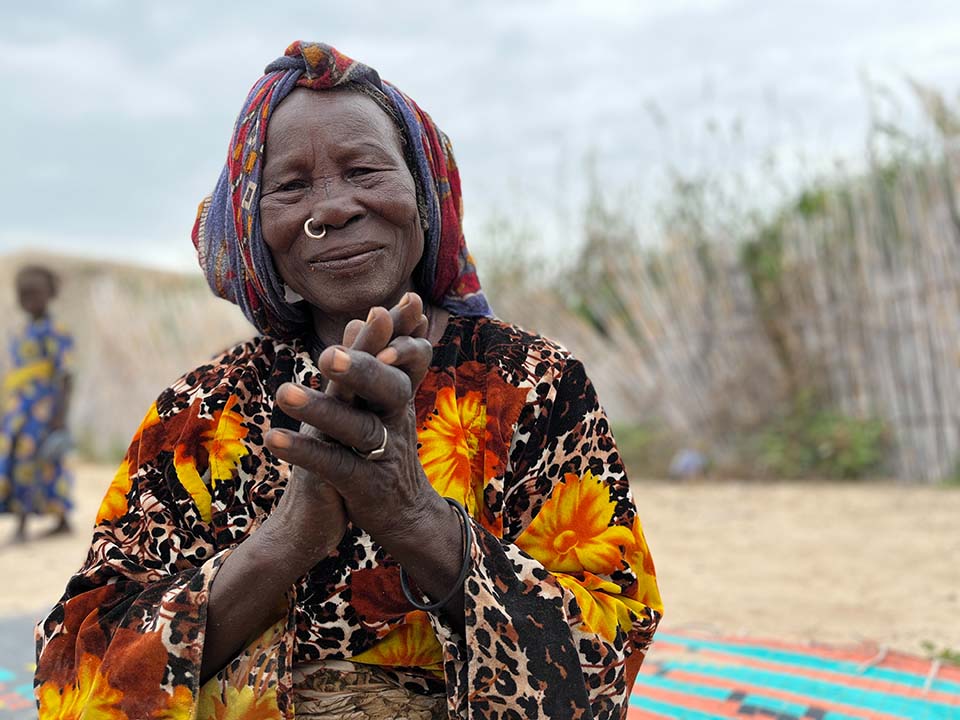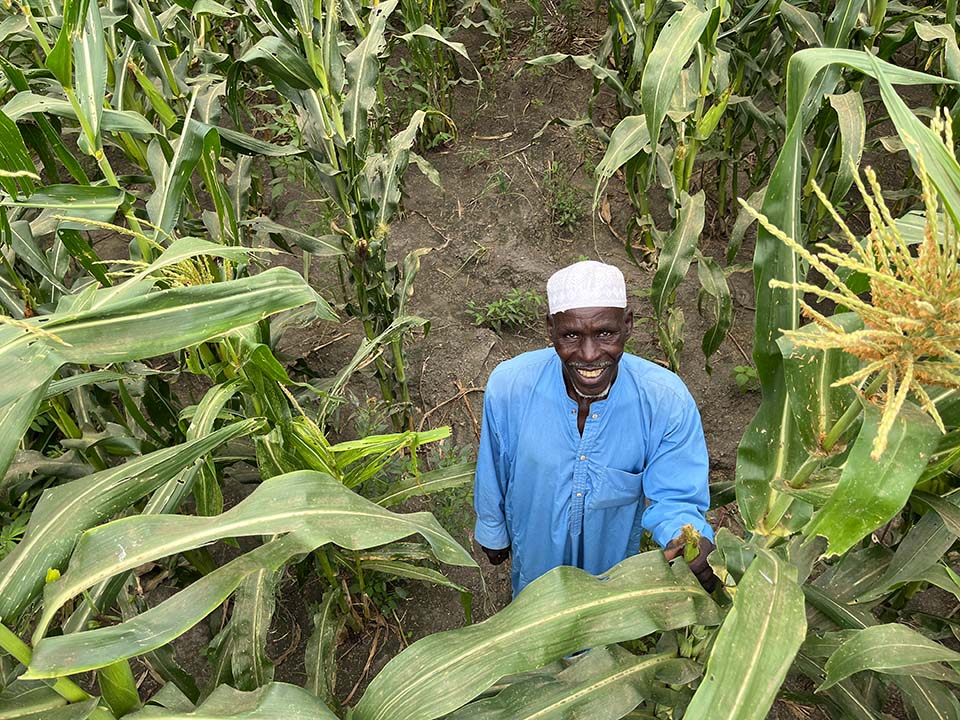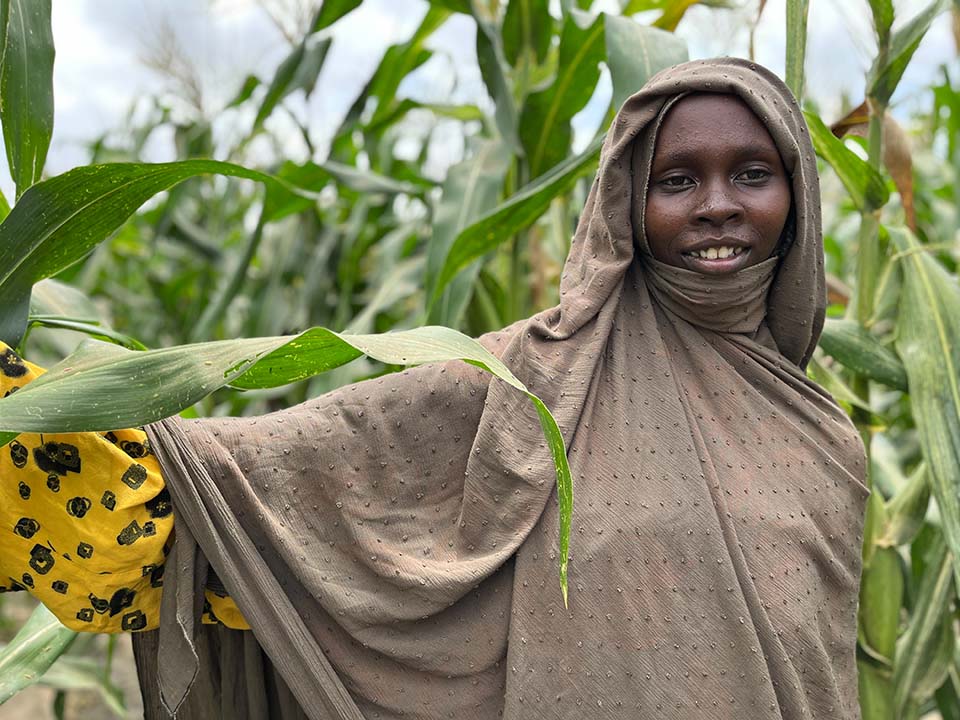

New Farming Techniques Improve Chad Harvest
“When I was young, the crops grew abundantly. We planted the seeds, and soon you had healthy, beautiful crops. So much corn. But for the past few years, we have struggled. The rains have changed. Our fields either flood or are too dry. The crops die. Our harvest is not enough to live on.”

Hawa Youssouf, a participant in a CRS agriculture project in Bol, Chad, says the project is improving crop yields.
Photo by Jennifer Lazuta./CRS
These are the words of Hawa Youssouf, a corn farmer from a small village near the city of Bol in the lake region of Chad. She does not know what year she was born, though her family estimates her to be at least 70, maybe 80 years old. Hawa has experienced many farming seasons.
She says the thing that pains her most is watching her children, grandchildren and great-grandchildren, who have also become corn farmers, struggling to grow enough food to survive.
Hawa and her family are not alone. Nearly every farmer you talk to in Bol has a similar story. Even teenagers remark on the difference in crop yields today, which are much lower compared to past years. Erratic rains and rising temperatures are the main cause, most say.

Ababakar Adoumi in his field near Bol, Chad.
Photo by Jennifer Lazuta./CRS
To help mitigate these negative impacts and help improve the livelihoods of local communities, a Catholic Relief Services agriculture project is training farmers on improved farming techniques and is supplying them with special seeds that are drought‑ and insect‑resistant and grow more quickly than regular seeds. Farmers also receive tools, such as hoes, to work their crops.
The trainings teach ideal spacing between seeds, ideal timing for the planting cycle, and irrigation methods that keep crops from flooding during monsoon rains and keep them hydrated during times of drought.

Fatima Mohammad Yousouf, from Bol, Chad, standing among her corn crops.
Photo by Jennifer Lazuta./CRS
“These are things we never had to do before, so I am grateful to have learned the techniques,” says Fatima Mohammad, a mother of five who also participates in the project. “Good crops are so important for the sake of my family. They nourish us, and they are our source of income. A bad harvest means a bad year for my family.”
The upcoming harvest will be the first since the farmers were trained.
“As we speak, I already see a difference with these seeds. My corn is taller and healthier than normal,” Fatima says.
Ababakar Adoumi, a project participant who grows corn and millet, says his corn sprouted after just two months this year, as opposed to four. He is confident that he will be able to plant a second cycle of corn this year after harvesting the first, more than doubling his previous yields.
“It will be a real source of pride and relief for my family,” he concludes, smiling.
------
The project featured in this story is funded by the German Federal Ministry for Economic Cooperation and Development via the German Development Bank. Phase I began in 2019 in Chad, Niger and Nigeria. In September 2021, Phase II expanded to Cameroon. Project activities include infrastructure development and rehabilitation, economic revitalization, social cohesion and local governance. In Chad, CRS partners with Caritas N’Djamena to implement the project.

